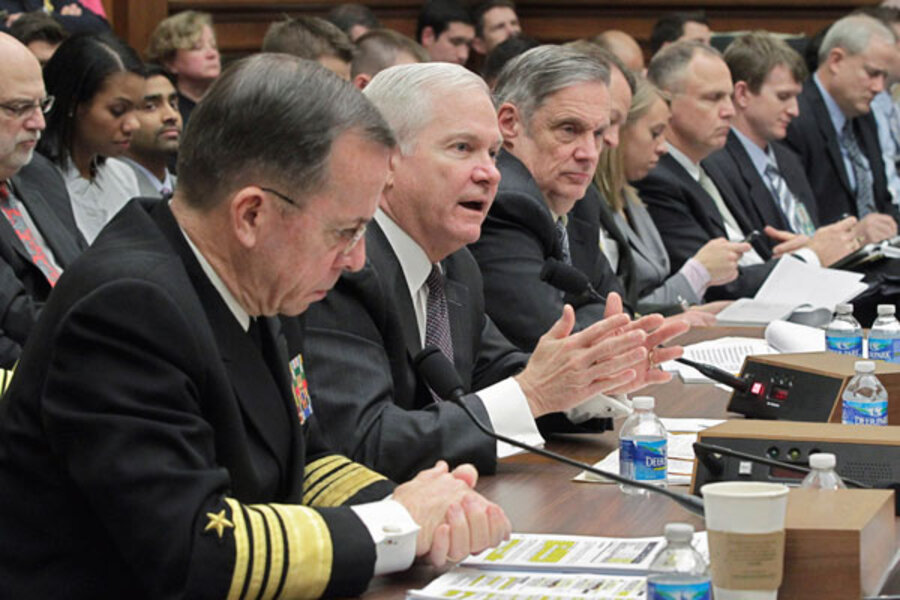Why defense spending keeps rising. (Hint: It's not just the wars.)
Loading...
| Washington
Despite President Obama's mandate that the defense spending be cut by $400 billion during the next 12 years, the Pentagon has proposed its highest budget adjusted for inflation since World War II – further evidence that the Pentagon is facing many of the budget-busting expenses as Congress itself.
Just as Congress considers reining in expenses for Medicare, the Pentagon is struggling with rising health-care costs, as well as congressionally enacted pay raises for servicemen and women.
The result is that the Pentagon “is spending more but not necessarily getting more,” according to a report by the Center for Strategic and Budgetary Assessments (CSBA) in Washington, which was released Monday. The report points out that the US military has “essentially the same size, force structure, and capabilities” as in 2001, but costs 35 percent more.
In fact, more than half of the Pentagon's spending increases during the past decade have nothing to do the wars in Afghanistan and Iraq, meaning the drawing down of those wars will not alone solve the Pentagon's problems.
Yet the CSBA report also suggests that there are savings in the Pentagon budget that would not impact the readiness of the military and the missions that US troops undertake in the future.
The new spending involves considerable waste, the report says. The Pentagon has spent nearly $50 billion since the 9/11 attacks on weapons systems that it never used due to technological failures or cost overruns, according to the study.
“These are weapons systems that have been started and then canceled without using any of them – we never saw one system fielded as a result of these programs,” says Todd Harrison, defense budget studies senior fellow with CSBA. “We can’t keep starting programs that are unrealistic and unaffordable and getting them canceled without getting anything out of it.”
And while the overall size of the active-duty force has remained flat in the past decade – between 1.4 and 1.5 million – increases in military pay and benefits have accounted for nearly one fifth of growth in the defense budget. The cost of maintaining military personnel has increased by 46 percent per person because of pay raises and added or expanded benefits enacted by Congress, according to the study.
These are costs that will not be going away anytime soon. But pulling back on the rate of growth in military pay could have a powerful budgetary effect. “Even temporarily reducing the rate of growth in pay and allowances has a compounding effect on all future raises and continues to accumulate savings year after year,” according to the report.
Health-care costs, however, will continue to rise. Only $1 billion to $2 billion of the nation’s $52 billion defense health-care budget is related to the care of those wounded in war. Rather, health-care inflation accounts for a great deal of the cost increase. So, too, does health care for military retirees, who often forgo their private plans.
A Pentagon task force is looking to spending cuts. But the continued structural growth in spending will force some tough decisions, Mr. Harrison says. “It has important implications for what happens to the defense budget in the coming years.”





